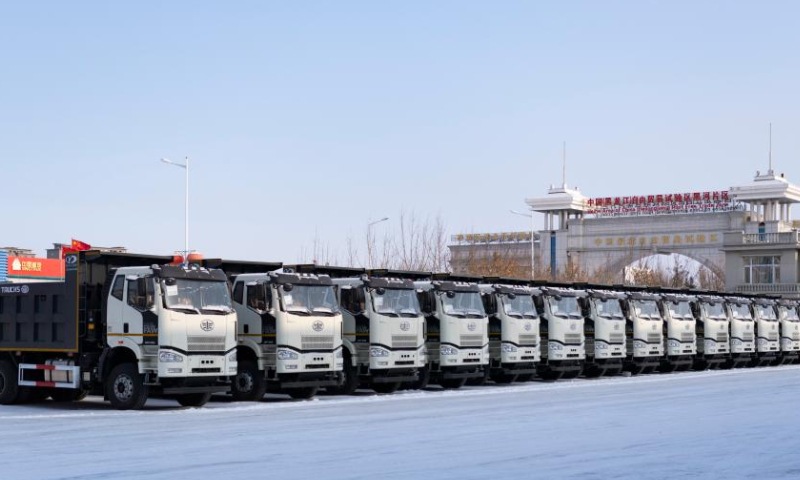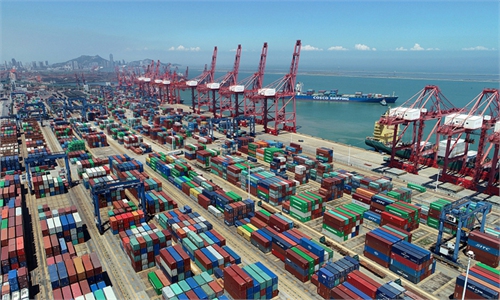China will continue to trim ‘negative list’ for foreign investment in Pilot Free Trade Zones: commerce minister

Vehicles to be exported are seen in the Heihe Area of China (Heilongjiang) Pilot Free Trade Zone in northeast China's Heilongjiang Province, Feb. 11, 2023. Recently, enterprises in the Heihe Area of China (Heilongjiang) Pilot Free Trade Zone have been busy with production to meet the orders and to make a good start in the first quarter of 2023. Photo: Xinhua
China will ramp up efforts to promote the rational reduction of its foreign investment "negative list" in its Pilot Free Trade Zones (PFTZs) and to establish a negative list for cross-border service trade, Chinese Commerce Minister Wang Wentao said in an article published in the People's Daily on Monday.
Efforts will be made to accelerate the institutional opening-up of rules, regulations, management and standards in the PFTZs, Wang wrote.
Over the past decade, PFTZs have played a pivotal role in the overall landscape of China's reform and opening-up efforts. They have driven a series of innovative reforms, demonstrating leadership in institutional innovation, Wang said.
For instance, PFTZs are spearheading in implementing the national treatment and the negative list for foreign investment, pioneering comprehensive openness in the service sector through the negative list management for cross-border service trade, and trying out measures such as the introduction of free trade accounts in the financial sector. These efforts have effectively harnessed the capabilities of the trial platforms, he noted.
Since 2013, the negative list for foreign investment access in the PFTZs has undergone seven reductions, dropping from an initial 190 items to the current 27 items, with the manufacturing sector seeing full openness and continuous progress in opening up the service industry, according to Xinhua News Agency.
In 2021, the negative list for the cross-border service trade in the Hainan Free Trade Port was introduced, aiming to facilitate the free and convenient movement of technology, capital and data using services as a conduit.
In the meantime, the PFTZs have established a cluster of open and development-oriented hubs for foreign investment and trade, creating vibrant examples of development driven by openness, Wang said.
In 2022, despite covering less than 0.4 percent of the national land area, the country's 21 PFTZs contributed to approximately 18 percent of the total foreign direct investment and import-export volume in China, data from the Ministry of Commerce (MOFCOM) showed.
From January to August 2023, the zones have continued to show steady growth in the scale of foreign investment and foreign trade, with an increasing focus on quality. Their growth rates of foreign investment outpaced the national average by 5.7 percentage points, while that of foreign trade outpaced the national average by 4.8 percentage points, MOFCOM data showed.
And, more efforts will be made to build PFTZs toward reaching even higher standards, Wang wrote in his article.
In addition to promoting the reduction of the negative list for foreign investment, there will also be enhanced support for PFTZs to further engage in differentiation, prioritizing the implementation of more opening measures. The measures will focus on key sectors such as biopharmaceuticals, maritime economy, and goods trade to drive innovative development across the entire industry chain, he wrote.
At the same time, the development of PFTZs will continue to adopt a balanced approach in measuring development and security, ensuring that while pushing forward with reform and opening-up experiments, the bottom line of avoiding systemic risk is maintained, Wang wrote.
Global Times



